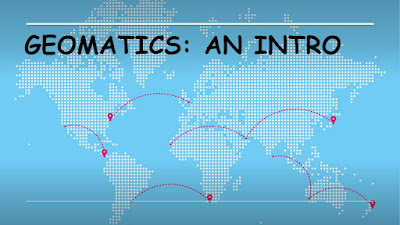Geomatics is an interdisciplinary field that combines the principles of surveying, mapping, remote sensing, and Geographic Information Systems (GIS) to study, measure, and manage spatial data. Geomatics is a rapidly growing field that has revolutionized the way we understand and interact with our environment. In this article, we will provide an introduction to Geomatics and discuss its importance in various industries.
Geomatics has been around for centuries, with early forms of surveying and mapping dating back to ancient times. However, the last 30 years have seen significant advancements in technology, which have led to the development of new tools and techniques that have transformed the field. The widespread use of computers, satellites, and advanced sensors has made it possible to collect and analyze vast amounts of spatial data, which has led to a deeper understanding of the Earth's surface and its natural resources.
One of the most important applications of geomatics is in the field of urban planning. The use of GIS and remote sensing tools has made it possible to create detailed maps and models of cities, which can be used to plan and manage urban infrastructure, transportation networks, and environmental resources. Geomatics has also played a critical role in disaster management and response, allowing emergency responders to quickly assess the extent of damage caused by natural disasters and develop effective relief strategies.
Another area where geomatics has had a significant impact is in the field of agriculture. Farmers can now use precision agriculture techniques, which involve the use of sensors and GPS technology to monitor crop growth, soil moisture levels, and nutrient content. This has led to more efficient use of resources, reduced environmental impact, and increased crop yields.
In the mining industry, geomatics is used to map and analyze mineral deposits, helping companies to identify areas with high mineral potential and plan mining operations more effectively. In the energy industry, geomatics is used to map and monitor pipelines, power transmission lines, and renewable energy resources such as wind and solar power.
Geomatics has also transformed the way we study the environment, with the ability to collect and analyze large amounts of data on everything from climate patterns to wildlife populations. This data can be used to create models and simulations that help us understand the impact of human activity on the environment and develop effective strategies to mitigate the effects of climate change.
In conclusion, Geomatics is a rapidly evolving field that has revolutionized the way we understand and interact with our environment. It is a multidisciplinary field that combines the principles of surveying, mapping, remote sensing, and GIS to study, measure, and manage spatial data. Over the last 30 years, advancements in technology have led to the development of new tools and techniques, which have transformed the field and allowed us to collect and analyze vast amounts of spatial data. Geomatics has important applications in various industries, including urban planning, agriculture, mining, energy, and environmental management. With continued advancements in technology, the field of Geomatics is expected to grow and have an even greater impact on society in the coming years.
Geomatics is the study of the measurement, analysis, and management of spatial data, while geospatial technology is the field that involves the use of various tools and techniques to collect, analyze, and manage spatial data.
GIS (Geographic Information System) is a computer-based tool that allows users to analyze and manipulate spatial data, while Remote Sensing involves the use of sensors to collect data about the Earth's surface from a distance.
#GeomaticsExplained #SpatialDataAnalysis #GISMapping #RemoteSensingTechnology #PrecisionAgriculture #UrbanPlanningTools #EnvironmentalManagement #DisasterResponse #MiningOperations #EnergyIndustry #ClimateChangeMitigation #NaturalResourceManagement #GeospatialTechnology #SpatialDataCollection #AdvancedSensors #SatelliteTechnology #GeographicInformationSystems #SpatialDataVisualization #EnvironmentalModeling #SustainableDevelopmentGoals
Declaimer: This article was generated by ChatGPT, a large language model from OpenAI. The information in this article is for general informational purposes only and should not be considered to be a substitute for professional advice.
I, Tri Dev Acharya, do not make
any representations or warranties of any kind, express or implied, about the
completeness, accuracy, reliability, suitability, or availability of the
information. Any reliance you place on this information is strictly at your own
risk. I will not be liable for any loss or damage arising from the use of this
article or any links provided.

No comments:
Post a Comment